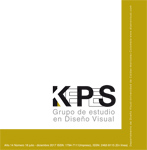Authors
Abstract
Nowadays many human activities are carried out online in a natural way. However, the case of visits to art museums in the cyberspace has an added experiential complexity: being physically in front of the “aura” of original pieces, and go across emblematic spaces continues to be a relevant symbolic fact which are difficult to substitute with non-immersive digital simulations for inhabitants and tourists. In spite of this, most leading museum institutions, along with their buildings, have online alternative sites with specific complementary objectives: advertising, ideological, commercial or educational.
This work studies the digital online spaces of the main art museums around the world synthesizing their identity, intentions and state of the art of the experiences they offer as a product of the visual interaction between art and container space. To that end, the work is divided in two sections. In the first section, the theoretical principles of the exhibition space as digital simulation in which art, architecture and physical experience participate as commodities for the construction of digital image, are developed. This section continues with an ideological journey from Malraux’s Musée Imaginaire to the growing online “world museum”: Google’s Arts and Culture. In the second section of this work, an analytical model of digital referents of the most internationally visited art museums both, in official websites and in the spaces assigned in the Arts & Culture site, is designed. From the analysis, four different types of typologies are established based on their different degrees of reality and interaction.
Keywords
References
Barranha, H. and Martins, S. (2014). Introduction: Art, Museums and Uncertainty.
En Barranha, H. and Martins, S. (ed.), Uncertain Spaces: Virtual Configuration in Contemporary Art Museums (pp. 6-7). Lisboa, Portugal: Universidade Nova de Lisboa.
Baratto, R. (2015). Proyecto Instagram para la exposición del MoMA: Latinoamérica en construcción: arquitectura de 1955 a 1980. Recuperado de http://www.archdaily.mx/mx/761295/proyecto-instagram-para-la-exposiciondel-moma-latinoamerica-en-construccion.
Benjamin, W. (1936). Das Kunstwerk im Zeitalter seiner technischen Reproduzierbarkeit. En Helmes, G. (ed.), Texte zur Medientheorie (pp. 163-190). Stuttgart, Germany: Reclam.
Bohigas, O. et al. (1997). Juicios sumarios: doce arquitectos y un escultor en el museo. Arquitectura Viva, 55, 56-59.
Bounia, A. and Myrivili, E. (2014). Beyond the ‘Virtual’: Intangible Museographies and Collaborative Museum Experiences. En Barranha, H. and Martins, S. (ed.), Uncertain Spaces: Virtual Configuration in Contemporary Art Museums (pp.17-31). Lisboa, Portugal: Universidade Nova de Lisboa.
Breslin, M. (2013). “Gallery of Lost Art”. Tate Modern Londres. Recuperado de http://www.gallery oflostart.com.
Carrozzino, M. and Bergamasco, M. (2010). Beyond virtual museums: Experiencing immersive virtual reality in real museums. Journal of Cultural Heritage, 11 (4), 452-458.
Cladders, J. (1990). Una teoría construida: el museo Abteiberg de Mönchengladbach. En López Moreno, L. (ed.), El arquitecto y el museo. Ciclo de conferencias mayo-junio 1989 (pp. 39-51). Jerez, España: Colegio Oficial de Arquitectos de Andalucía Occidental.
Déotte, J-L. (1998). Catástrofe y olvido: las ruinas, Europa, el museo. Santiago de Chile, Chile: Cuarto Propio.
Dollens, D. (2000). De lo digital a lo analógico. Barcelona, España: Gustavo Gili.
Foster, H. (ed.) (1983). The Anti-Aesthetic. Washington, USA: Bay Press.
Frankel, D. (1990). Los Museos y los espacios neutros de la galería. Una visión colectiva. En López Moreno, L. (ed.), El arquitecto y el museo. Ciclo de conferencias mayo-junio 1989 (pp. 99-104). Jerez, España: Colegio Oficial de Arquitectos de Andalucía Occidental.
Kersten, T. et al. (2017). Development of a Virtual Museum Including a 4d Presentation of Building History in Virtual Reality. International Archives of the Photogrammetry, Remote Sensing and Spatial Information Sciences, XLII (2/W3), 361-367.
Lévy, P. (1999). ¿Qué es lo virtual? Barcelona, España: Paidós.
López Pellisa, T. (2013). Metástasis de los simulacros y metadiégesis digital En la novela perfecta de Carmen Boullosa. Pasavento. Revista de Estudios Hispánicos, 1 (2), 283-296.
Malraux, A. (1947). Psychologie De l’Art: Le Musee Imaginaire. Paris, France: Albert Skira.
Malraux, A. (1951). Les Voix du silence. Paris, France: Gallimard.
Marín Torres, M. (2004). Los visionarios de la gestión de la memoria artística. Revista da Faculdade de Letras e Técnicas do Património Porto, III, 271-291.
Montaner, J.M. (2003). Museos para el siglo XXI. Barcelona, España: Gustavo Gili.
Noever, P. (ed.) (1991). Architecture in transition between Deconstruction and new modernism. Munich, Germany: Prestel.
Rashid, H. (2000). Asymptote Architecture: Guggenheim Virtual Museum. Domus, 822 (1), 26-31.
Rodríguez de las Heras, A. (2004). Espacio digital. Espacio virtual. Debats, 84 (1), 63-67.
Sood, A. (2011). Building a museum of museums on the Web. Recuperado de http://www.ted.com/talks/amit_sood_building_a_museum_of_museums_on_the_web.
TEA/AECOM. (2016). Theme Index & Museum Index: The Global Attractions Attendance Report. Recuperado de http://www.aecom.com/content/wpcontent/uploads/2016/05/2015_Theme_Index__Museum_Index.pdf.
von Grafenstein, M., Schneider, E. and Richter, N. (2015). MAUERSCHAU: A Mobile Virtual Museum - Postmodern Storytelling through Digital Media. Recuperado de http://ewic.bcs.org/content/ConWebDoc/54929.
Zapata, M. (2016). Aplicación en realidad aumentada para divulgación del patrimonio cultural. Revista KEPES, 13 (14), 33-59.

 pdf (Español (España))
pdf (Español (España))
 FLIP
FLIP






















